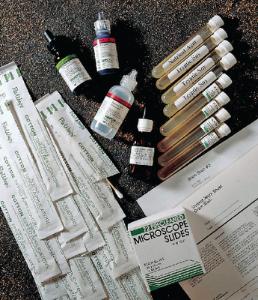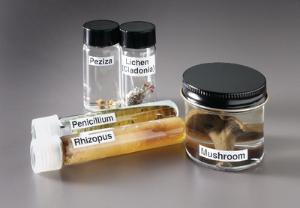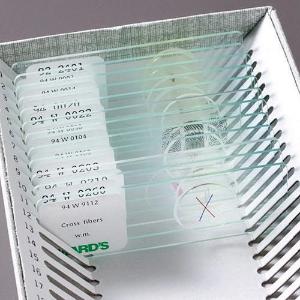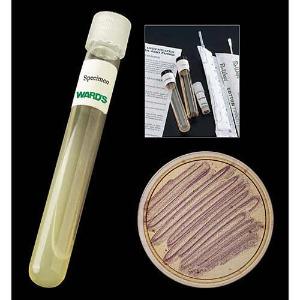How to teach with Bacteria and Fungi: A free guide for working with and caring for your live materials
Download this care guide for the facts on Bacteria and Fungi and instructions for their observation, care, and culturing.
Fill form to unlock content
Error - something went wrong!
Get Your Free Guide
Thanks! Enjoy your download!
Enjoy
Introducing Ward’s How to Teach with Live Materials Series
Curious about teaching with live critters in your classroom, but not sure where to start? Or are you ready to incorporate a new type of specimen in your life science lessons but not sure which one is right for you? We’re here to help with our all-new How to Teach with Live Materials series of free guides. These free downloadable guides are packed with information and expert guidance from our in-house live materials lab technicians and biologists. You’ll get a thorough introduction to the wide world of living specimens and learn how to use them in your classroom to teach hands-on lessons that explore everything from life cycles, animal behavior, comparative anatomy, physiology, bio-chemical processes, disease, health, nutrition, and more!
Read on to learn about teaching with Bacteria & Fungi and discover our other guides in this series at Ward’s World! Check back for more coming soon.
Middle School/High School
Nearly everywhere we look on the planet, there are bacteria and fungus among us! If we’re lucky, they’ll be in the form of a tasty truffle, Roquefort blue cheese, or a gut-healthy probiotic yogurt.
The students in your class will be in awe of the number of ways bacteria and fungi impact our lives. Some are pathogens that cause disease, while we use others to purify our water and produce medicine. Scientists even find ways to pit the two organisms against each other. For example, in the historic cage match (or petri dish match) between Penicillium rubrum (fungus) and Staphylococcus aureus (bacteria), the fungus obliterates the staph bacteria and rises as the undisputed champion. Lucky for us, penicillin is the miracle drug that has saved millions from bacterial infections.
Download the Working with Bacteria and Fungi care guide above to support your lessons that break down the facts and encourage students to explore the world around them.
Working with Bacteria and Fungi introduces students to the fundamentals of various topics, including aseptic techniques, culturing, microorganisms, physiology, respiration, reproduction, and more.
What are the 6 Kingdoms of Living Organisms?
Bacteria are in the Kingdom Monera, and Fungi is the kingdom that includes yeasts, molds, and all species of mushrooms and toadstools. All living organisms are classified into one of the following six kingdoms:
- Animal - (aka Metazoa) are multicellular, eukaryotic organisms
- Plant - immobile, multicellular eukaryotes; predominantly photosynthetic eukaryotes
- Fungi - multicellular aerobic heterotrophic eukaryotes
- Protista - single-cell, primitive eukaryotic organism; paraphyletic (descended from a common ancestor, but not including all descendants).
- Monera - Archaebacteria; no cell nucleus nor any other membrane-bound organelles within their cells; most but not all have a cell wall
- Monera - Eubacteria; Prokaryotic, single-cell organisms
But don’t set that number six in stone! Classification systems evolve with advances in genetic research, like Thomas Cavalier-Smith adding a new group in 2015 to the previous six for algae called Chromista. Students in higher grade levels might enjoy joining the 6 Kingdoms vs. 7+ Kingdoms debate!
Use bacteria and fungi cultures in your classroom to help students observe these organisms’ morphology, reproduction processes, and other biological functions. Download the Working with Bacteria and Fungi guide at the top of this page to help you get started.
For help caring for your live bacteria and fungus, check out our Bacteria and Fungus Care Guide.
About Ward’s Science Live Materials
Ward’s Science is committed to supplying high-quality specimens that support a wide variety of classroom activities and research. Because we cultivate and care for all of our live materials in our onsite labs, we ensure that your materials are always fresh, healthy, and delivered on time.
For more information about how to care for live materials, visit our Live Material Care Guide page; it has instructional and informational literature sheets for the most popular live specimens in our collection. From algae to vertebrates and everything in between, you will find the facts and instructions necessary to properly provide care for your live specimens and enrich your lessons with additional background information.
Our expert biologists and lab technicians are here to help with questions or one-on-one support with your live materials—Email sciencehelp@vwr.com for personalized support, custom orders, and more.
Recommended products:
[StartProductBlock]

Ward's® Gram Staining and Bacterial Morphology Lab Activity
Students perform a Gram stain on various species of bacteria to recognize gram-positive and gram-negative bacteria. Watch this video How to Prepare a Gram Stain Slide.
[EndProductBlock]
[StartProductBlock]

Ward's® Fungi Kingdom Survey Set
Study the morphological differences in the fungi kingdom and a lichen which shows the symbiotic relationship between fungi and algae.
[EndProductBlock]
[StartProductBlock]

Bacteria and Fungi Slide Set
An ideal selection to demonstrate morphological differences between two kingdoms.
[EndProductBlock]
[StartProductBlock]

Ward's® Live Mycobacterium smegmatis culture
This organism is occasionally isolated from soil but most frequently from smegma- a secretion from male and female genitalia.
[EndProductBlock]
[StartProductBlock]

Biological Diversity - Five Kingdoms Slide Set
Representatives from the traditional taxonomic scheme
[EndProductBlock]
